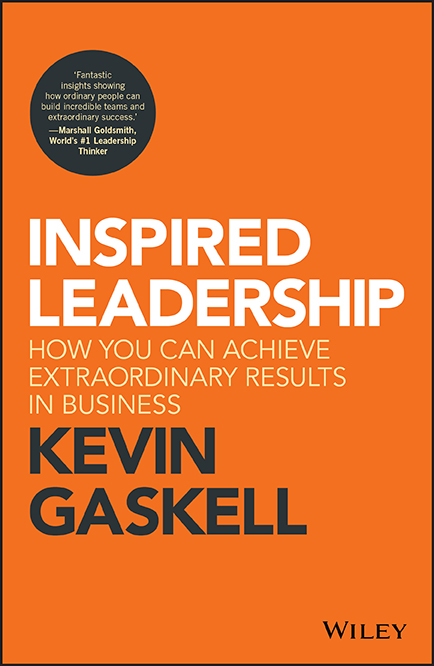If employees think that marketing is a job done only in one department, the company is heading for trouble, says former Porsche MD Kevin Gaskell, who believes that everything the customer touches relates to marketing and needs to be done well. He says ‘inspired leaders’ recognise the importance of every single interaction and build that idea into the business.
When I took over as managing director of Porsche GB – my first taste of business leadership – the company had lost 90% of its sales and we were making a 20% loss on every sale we made. Newspapers were flying helicopters over the field in which we kept all our unsold cars to take pictures. In the head office, we employed 260 people, even though our dealers were selling fewer than 2,000 cars a year.
In my first month in charge, I had to reduce our headcount to 120, from 13 departments to five, just to stay in business. I had to say goodbye to most of the people with ‘marketing’ in their job title or description (at that time, we had our own in-house marketing agency as well as employing one). Was this because I didn’t value marketing? It was the opposite.
It was because then, and now, I believe that marketing the product or service is a fundamental part of everyone’s job. But we had forgotten why we were there. It wasn’t just that we weren’t selling the product. In the UK dealer satisfaction survey, Porsche was in position 32. That’s out of 32. How could we dig ourselves out of a hole like this?
Dare to dream
If you have to do something extraordinary, it has to be everybody’s business. The first thing that teams I work with do, is to dare to dream – to let go of the fear of doing something new. I believe that dreaming has five dimensions: it breaks rules, it is big, it gives purpose, it inspires change and it creates passion in those who do the dreaming. Some think that dreaming is someone else’s business, that it is added later when we have done the day job. I believe the opposite, so I like to bring together groups from the business to find out what this dream is.
Think big
One of the problems I commonly see, is companies that have lost the ability to dream (we all had it when we started off) and so they think small. Instead of thinking about 3% growth, I challenge my teams to imagine what we would need to do to grow at 30%, or 300%. It forces us to use our imaginations and it also cuts through the comforting lie that 3% growth is success.
Interrogate the product
We impose our own limitations: this is how we do things around here. But what do we actually provide? At Porsche, it wasn’t transport and, if it was just a fast car, there were plenty of choices. We needed to define what we provided and then deliver it to a world class standard. That’s not just to talk about being world class, but to make that real in every job, from the cleaner to the mechanic to the people who answered the telephone.
At Porsche, our strengths should have been quality, engineering, design, integrity and racing heritage. But, when we looked at the cars we made and the service we provided, we had stopped noticing the simple things we were getting wrong and which had begun to drive customers crazy. Our quirks were cool in the 1950s. But we weren’t in the 1950s any more.
When teams that I lead dare to dream, I challenge them to tell me what their dream looks like, what people would say about us and what we would say about ourselves – and how it should feel to all of us when we deliver that dream. When we collectively agree a 360 degree view of the brand experience, it creates a goal that all employees can relate to, because they created it.
Better first; bigger follows
Price is not a number, it is part of an experience. We often prevent ourselves from improving because we believe marketing costs money. At Porsche, we had no money to spend, so every improvement meant we had to think about behaving differently. It was my first experience of the truism that we need to be better first, and bigger will follow.
This meant translating the 360-degree view into something that has relevance for everyone’s job, a top-to-bottom shared commitment to delivering the brand’s promise. Thinking carefully about consistency and finding ways to measure this experience, not simply the things you always measured.
Passion means quality
We all engineer quality. Henry Ford said: “Quality means doing it right when no-one is looking.” My experience is that when the message is clear, you should give away power to your team members, who will find the best ways to deliver your brand experience.
When you visited Porsche head office, there were four pristine cars sitting on a shiny atrium floor. At the time, there was a rumour that Porsches dripped too much oil (all cars drip oil, but the negative perception had stuck). We fretted that people would come into reception and the first thing they would note wouldn’t be four beautiful cars. They would see four drips of oil. So, the cleaners volunteered to check every day, twice a day, that there would never be oil on the floor. Instead, visitors remarked that there were never drips under our cars. The cleaners helped change the perception of the brand, because they felt they owned the Porsche brand experience as much as I did.
A company of inspired leaders
In 1,000 days, Porsche GB went from losing 20% on each sale to making 20%, and cleared its stock. Dealer satisfaction went from number 32 to number one, for two consecutive years. And, in the time since I’ve moved on to build new and exciting companies, time and again I’ve witnessed ordinary people in my teams casting off fear, daring to dream and taking the initiative to accomplish extraordinary things. This is true in start-ups and established companies, from boat builders to ISPs. The work that inspired leaders do to help bring out that common dream, I have found, means that our marketing message becomes more powerful, more effective and, most important, more authentic.
Have an opinion on this article? Please join in the discussion: the GMA is a community of data driven marketers and YOUR opinion counts.
Read also:
Agility, experimentation and culture change: what innovative start-ups teach brands
Put innovation at the top of your business agenda







Leave your thoughts